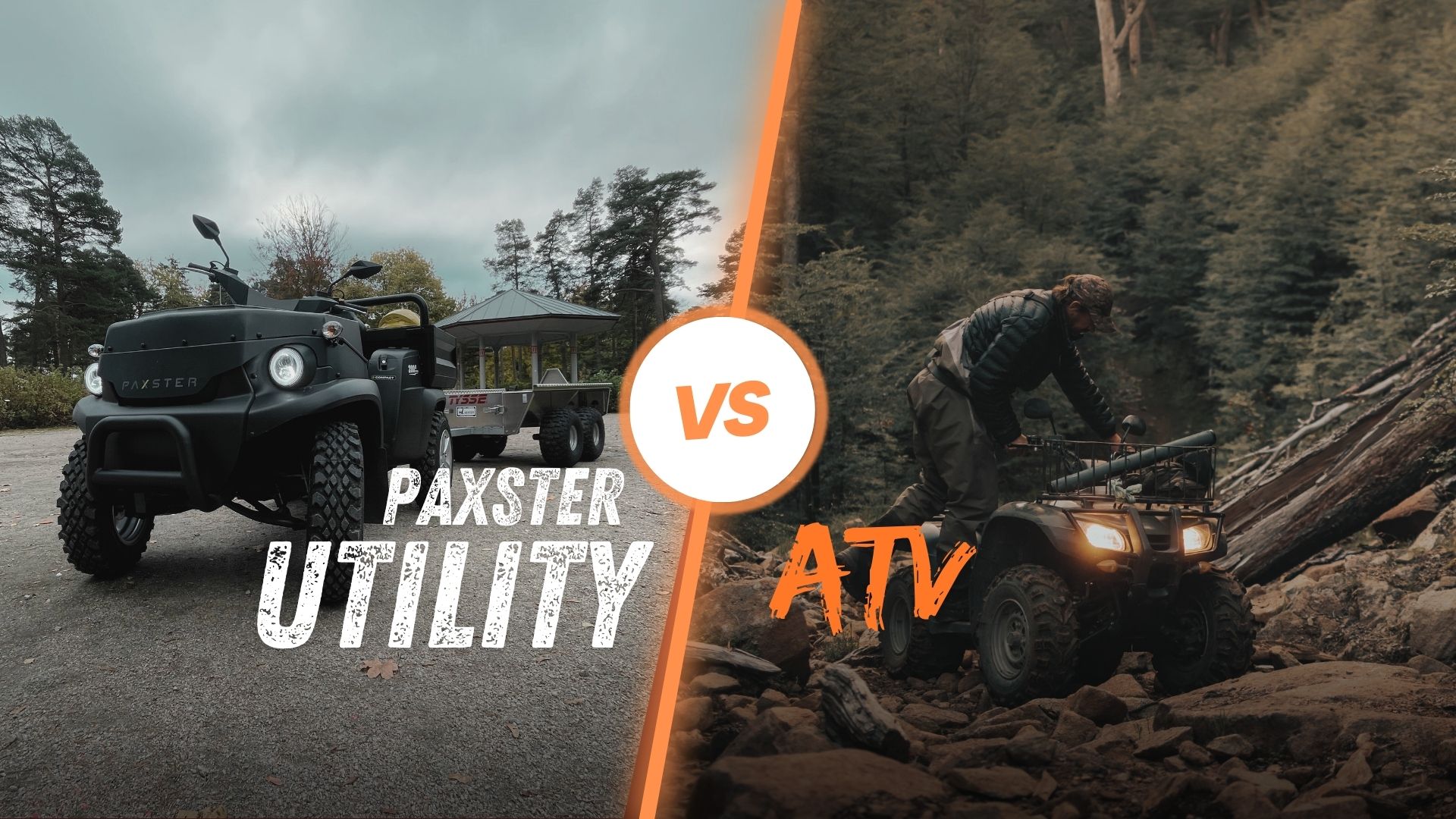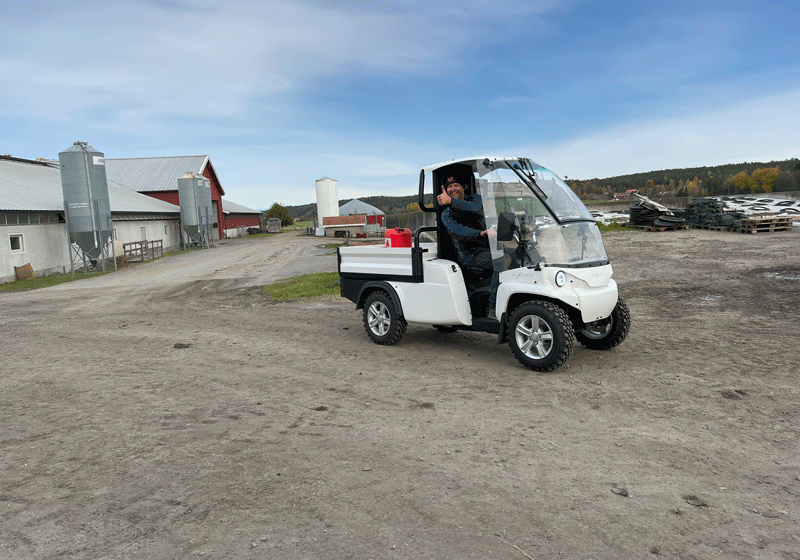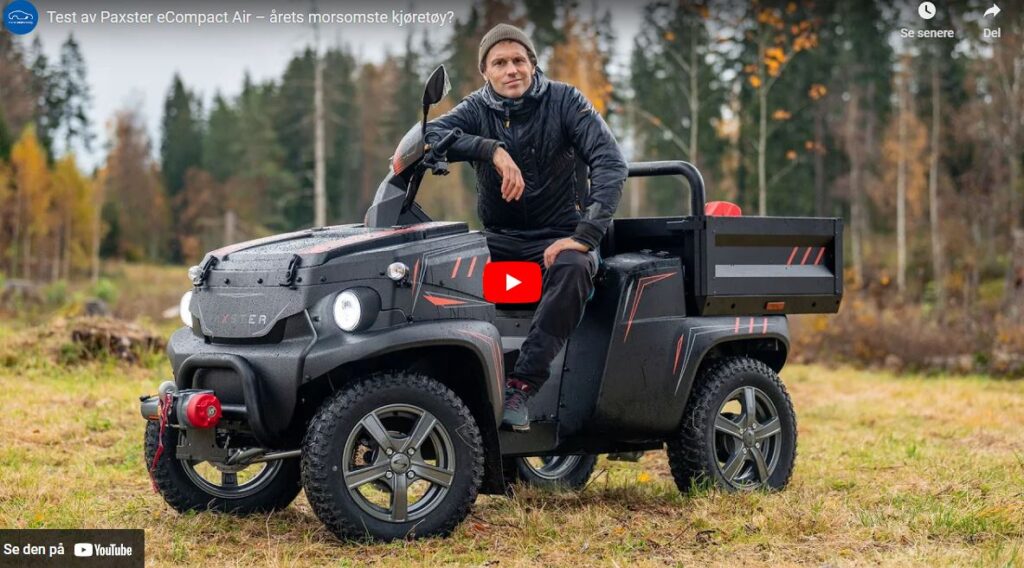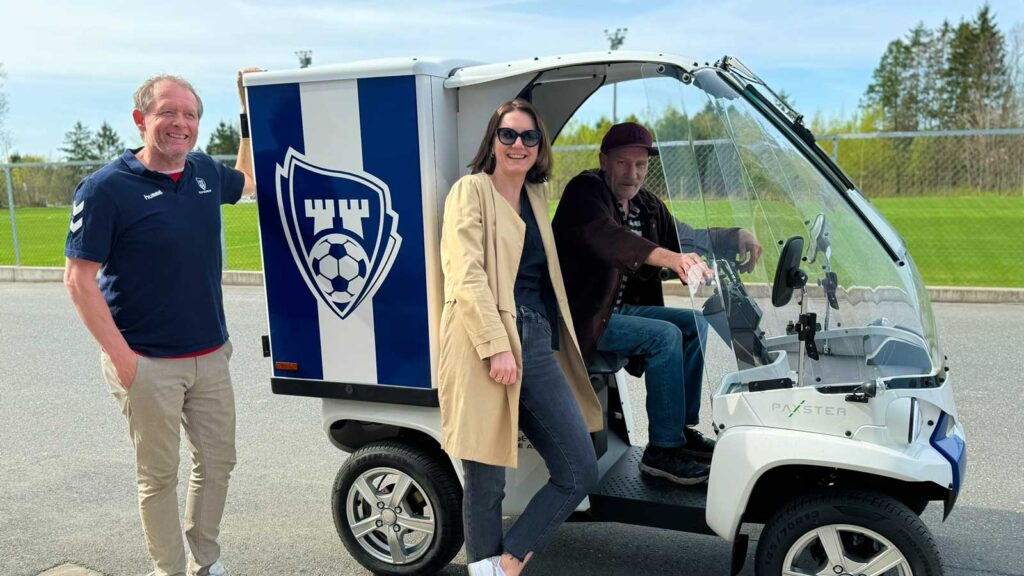Choosing the right utility vehicle for your professional needs can be challenging. Whether you manage public maintenance, oversee industrial sites, or run a leisure facility, selecting the ideal utility vehicle is crucial.
While the capabilities and limitations of ATVs are well-known, the Paxster represents a newer category within the larger utility vehicle landscape. Many customers often found themselves comparing the Paxster with ATVs, often without fully understanding the unique features each offers.
This guide will help you understand the differences and provide a clear comparison of ATVs and Paxsters. By exploring the strengths and best use cases for each, you’ll be equipped to make an informed decision that meets your specific requirements.
But before that…
ATVs and Paxster have a lot in common
While ATVs and the Paxster serve different purposes, they share several features that enhance their versatility and value for various work tasks:
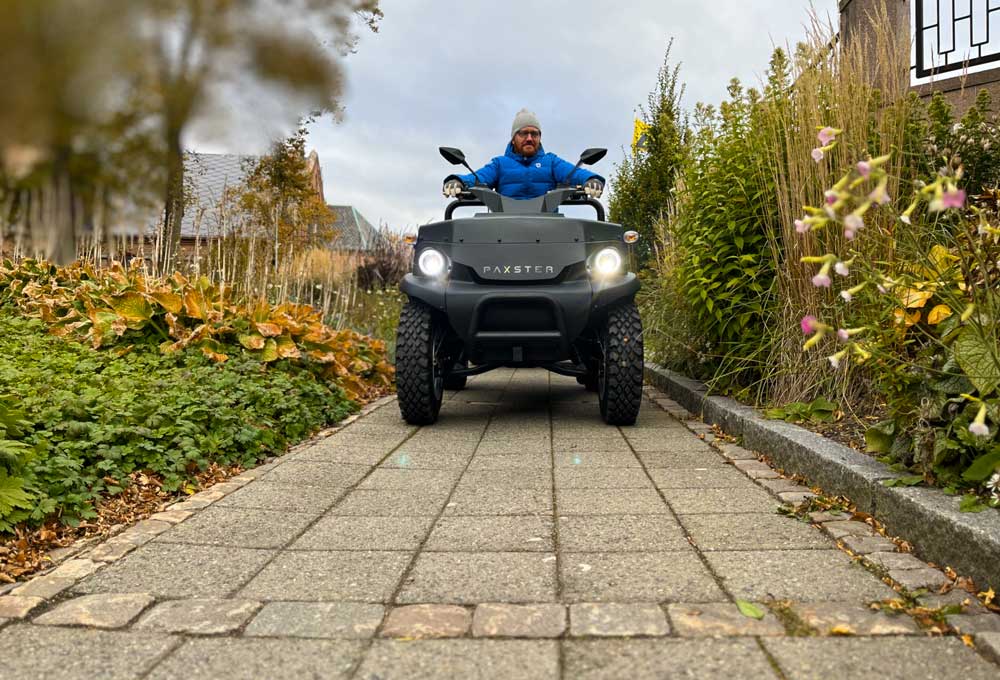
- Size and navigability: Both ATVs and the Paxster eCompact (short wheelbase version) have similar dimensions and form factor, ensuring excellent navigability. ATVs excel in rugged off-road conditions, while the Paxster is ideal for maneuvering through complex or crowded areas.
- Intuitive controls: Both vehicles use a handlebar and motorcycle-like controls for a familiar and intuitive user experience. The ATV’s thumb-style throttle is suited for rough terrain, whereas the Paxster’s twist-grip throttle ensures smooth operation in complex environments.
- Solo-operator design: Primarily designed for solo use. While some ATVs can carry an extra rider, the Paxster offers an optional removable, non-road-legal rear-facing bench for transport of up to two passengers around premises.
- Operating equipment: Both can be equipped with front and rear hitches and winch systems, accommodating attachments like rotary brooms, harrows, and salt spreaders. ATVs will handle this type of equipment with ease in demanding terrains, while the Paxster is perfect for operating the equipment in intricate spaces like campuses and industrial sites.

By understanding these shared features, you can appreciate the unique advantages each vehicle offers, helping you choose the right tool for your specific needs.
Designed for different tasks
It’s in their specialized capabilities and design intentions that the ATV and Paxster truly begin to diverge. To make an informed decision, it’s imperative to ask yourself key questions that address your specific needs and requirements.
Consider your terrain
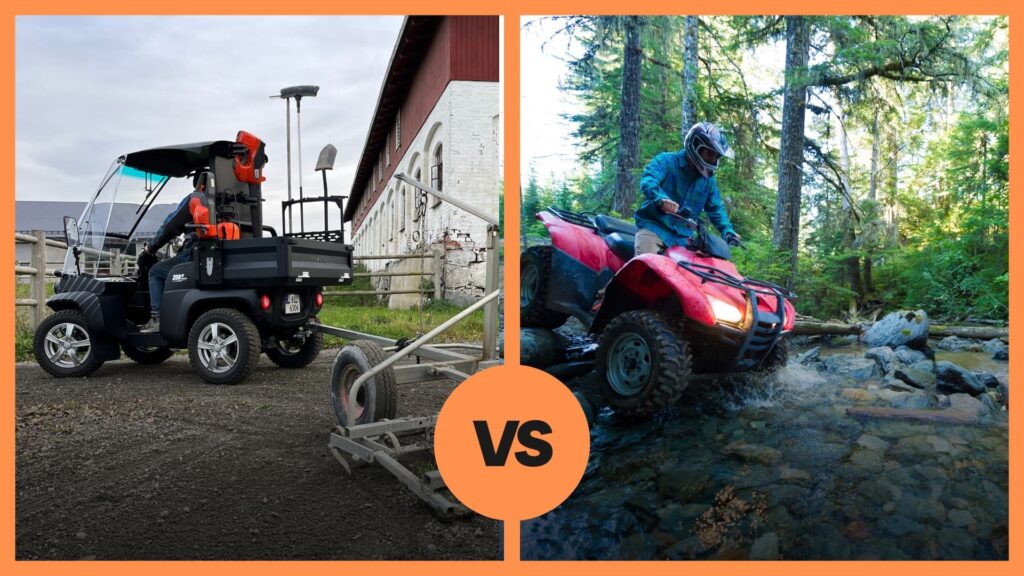
- ATVs: When your job demands navigating rugged, hilly, off-road conditions, ATVs are unmatched. They excel in rugged terrains, often with 4×4 capabilities and extra long suspension travel. ATVs will generally also offer more hauling capacity and are ideal for forestry, agricultural applications, sports, and adventure riding.
- Paxster: Paxsters are fully road legal and primarily built for year-round, on-site and on-road utility, offering a comfortable driving experience in more complex environments. But they are also highly capable of handling moderate off-road tasks efficiently, such as grass, gravel, and forest paths. This balanced performance makes them perfect for public maintenance, light farm applications, facility management, and industrial tasks to mention some.
Watch this video to see the diverse terrains where a Paxster vehicle excels.
Versatility and comfort needs
- ATVs: Ideal for short, rugged tasks, ATVs may be less comfortable for prolonged use. The saddle design provides excellent stability on gradients and makes holding on to the machine easy and effortless.
- Paxster: Designed with ergonomics in mind, the Paxster offers easy entry and exit, a highly user-friendly interface, and spacious cargo areas, making it perfect for tasks requiring frequent stops and loading.

It also offers weather protection with a large, heated windscreen and roof, optionally equipped with wind-deflectors.
Unlike most ATVs, the Paxster eCompact offers significant cargo areas in both the front and rear, providing ample space for transporting tools, equipment, and materials efficiently. It also includes a large on-board inverter to replace the generator for on-demand power.
Fossil or electric?
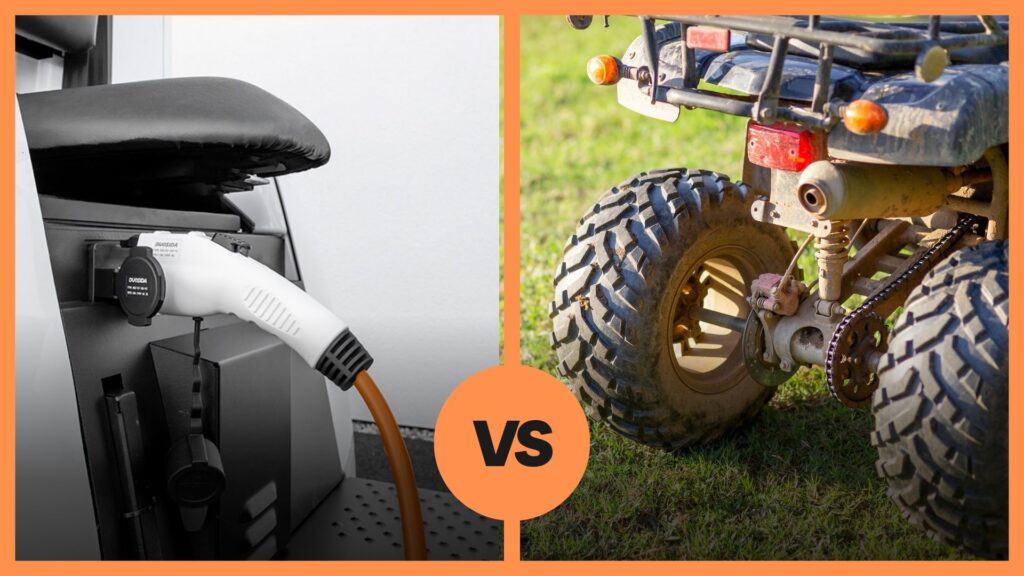
- ATVs: Most major ATV manufacturers continue to focus on traditional gasoline engines, which are highly effective for operating in rugged terrain and performing heavy-duty tasks far from charging infrastructure. While electric models are beginning to emerge, gasoline-powered ATVs remain the standard in professional applications due to their proven reliability and performance. For tasks where noise and emissions are not primary concerns, ATVs offer robust power and dependability
- Paxster: If sustainability and noise reduction (including visual noise) are priorities, the electric Paxster offers silent and emission-free operation, making it ideal for environmentally sensitive areas such as parks, campuses, and residential zones. Since 2011, Paxster has been manufacturing electric lithium drivetrains designed for Nordic conditions, ensuring robust performance and reliability.
Charging the Paxster is incredibly easy with its on-board charger that plugs directly into standard mains power, allowing for convenient overnight charging
Some common use cases for Paxster
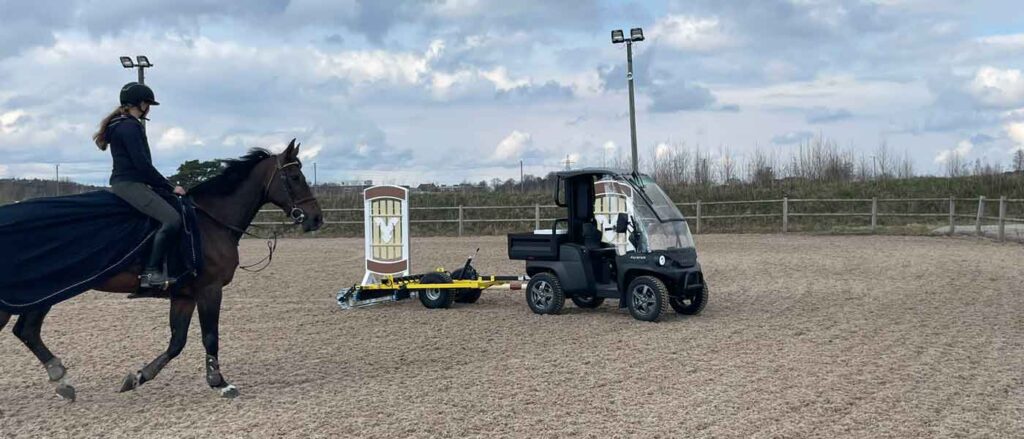
- Construction sites: The Paxster offers significant payload capacity and is road-legal, making it ideal for transporting materials and tools across and between large sites.
- Industrial sites: The Paxster’s emission-free operation makes it suitable for both indoor and outdoor use, whereas ATVs are typically limited to outdoor areas.
- Public maintenance: The Paxster’s road-legal status, equipment compatibility and low operational cost make it perfect for public maintenance tasks.
- Leisure facilities: For golf courses operations, cemeteries, parks, events and museums, the Paxsters quiet operation ensures minimal disturbance. ATVs can be disruptive but useful in less sensitive areas.
- Harbour operations: Both vehicles can handle heavy loads, but the eCompact’s electric power is advantageous for reducing emissions in ports.
Conclusion
Choosing the right vehicle for your professional needs requires careful consideration of your specific environment, operational requirements, and long-term costs. While ATVs excel in extreme off-road conditions, offering unmatched durability and agility, the Paxster is out as a versatile, environmentally friendly, and cost-efficient solution for a broad range of applications.
Whether you manage public maintenance, oversee industrial sites, or run a leisure facility, the Paxster significant cargo capacity, silent operation, and zero emissions make it an excellent choice.
To see if the Paxster is the right fit for you, take our interactive test and explore the possibilities.
Our network of knowledgeable dealerships is ready to assist you in finding the best solution to meet your professional needs.


